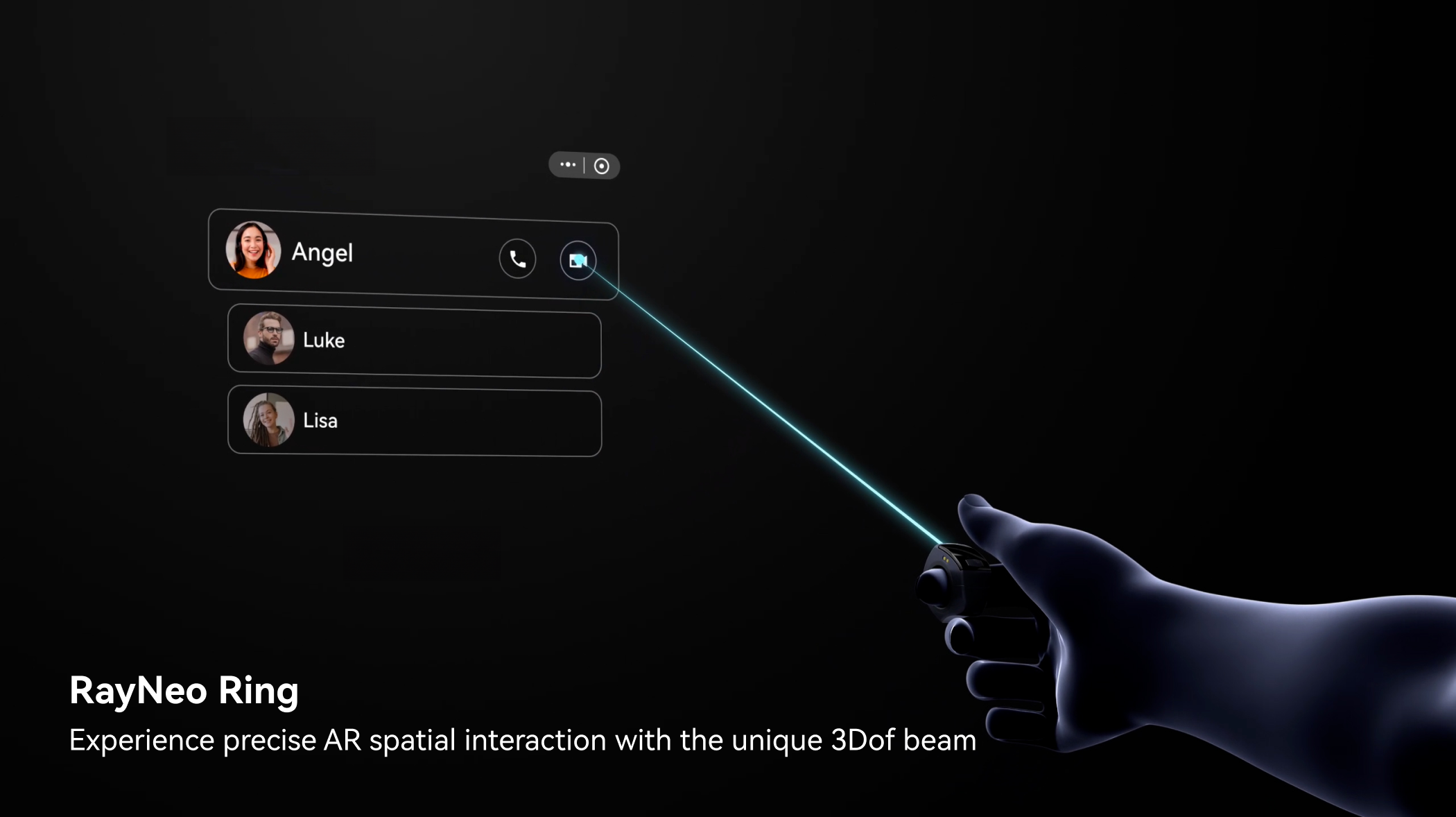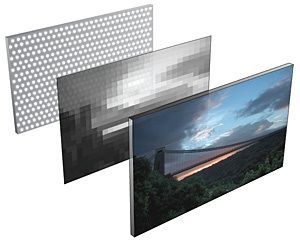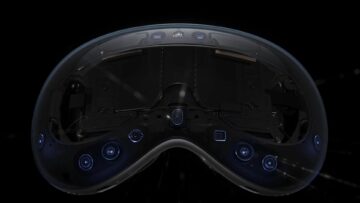TCL launched the crowdfunding campaign for RayNeo X2 standalone true AR glasses, priced at $700.
Unless an unannounced competitor ships first, RayNeo X2 will be both the first standalone AR glasses, meaning they don’t require a separate compute device, and the first AR glasses with microLED displays.
RayNeo claims that X2 will be capable of the kind of out-of-home use cases people have been envisioning for AR glasses for years now, including outdoor navigation and realtime speech translation anchored to the person speaking.
The glasses are controlled by touch controls on the temples, voice commands, or a RayNeo Ring that acts as a 3DoF rotational laser pointer.

RayNeo X2 has Snapdragon XR2 Gen 1 chipset onboard, the same used in Meta Quest 2 and Pico 4. The likely reason it isn’t using the Gen 2 chipset is that its development started years ago, before the new generation chipset was available. TCL actually showed off RayNeo X2 as a concept at CES 2023, but is only now ready to launch a crowdfunding campaign for it.
The most surprising spec of RayNeo X2 is its microLED displays. MicroLED is a truly new display technology, not a marketing name for a variant of LCD such as “Mini LED” or “QLED”. MicroLED is self-emissive like OLED, meaning pixels output light as well as color and don’t need a backlight, but is more power efficient and can reach much higher brightness. While most major electronics companies are actively researching microLED, this is the first time we’ve seen it announced as coming to a product other than a $150,000 TV.
RayNeo X2 use cases. Note that in reality, the field of view is significantly narrower and makes this concept entirely unrealistic.
First-generation new display technology is often very limited, though, and that’s the case here too. The microLED displays in RayNeo X2 were announced as having a resolution of just 640×480 each, compared to the 1920×1080 typical of OLED microdisplays in existing tethered AR glasses like Xreal Air 2 Ultra.
Their advantage in RayNeo X2 is significantly higher brightness, up to 1500 nits compared to the 500 nits you get from Xreal, and likely much greater power efficiency. These properties make RayNeo X2’s displays far more suitable for outdoor use, and enable the glasses to be powered entirely by an onboard battery.
RayNeo is claiming up to 3 hours of continuous use, and claims there will be a low power “display off” mode for screenless use cases like capturing photos and videos, already becoming popular with the Meta Ray-Ban glasses. RayNeo X2 includes a color camera capable of taking 16 megapixel photos or 1080p 30FPS videos, and has 128GB of storage to store them as well as its apps.

However, as with all current products leveraging transparent AR optics, the achilles heel of RayNeo X2 is its field of view, just 25 degrees diagonal. That’s worse than even the Xreal glasses, which we already consider too narrow for most true AR use cases. That means you’ll likely often only see partial segments of RayNeo X2’s virtual interfaces, and lose track of which interfaces are even present.
RayNeo X2 is being funded by an Indiegogo campaign, but it’s unclear why. RayNeo is a Chinese startup described as “incubated” by hardware giant TCL, and its products are TCL branded, but we couldn’t determine the exact relationship between the companies.
The Indiegogo page claims the first units will ship in April for $700.

TCL also announced RayNeo X2 Light, standalone non-AR smart glasses using a similar design and the same microLED displays, but with the lower-end Snapdragon AR1 Gen 1 chipset and no positional tracking. RayNeo X2 Light will apparently launch in Q3 2024, with more details planned to be revealed over the next few months.
This article was first published in January when the crowdfunding campaign was announced, and has been updated to reflect the campaign launching.
- SEO Powered Content & PR Distribution. Get Amplified Today.
- PlatoData.Network Vertical Generative Ai. Empower Yourself. Access Here.
- PlatoAiStream. Web3 Intelligence. Knowledge Amplified. Access Here.
- PlatoESG. Carbon, CleanTech, Energy, Environment, Solar, Waste Management. Access Here.
- PlatoHealth. Biotech and Clinical Trials Intelligence. Access Here.
- Source: https://www.uploadvr.com/tcl-rayneo-x2-standalone-microled-ar-glasses/
- :has
- :is
- :not
- $UP
- 000
- 1
- 1122
- 16
- 2%
- 2000
- 2023
- 2024
- 25
- 4
- 500
- a
- actively
- acts
- actually
- ADvantage
- ago
- AIR
- All
- already
- also
- an
- anchored
- and
- announced
- apps
- April
- AR
- AR Glasses
- ARE
- article
- AS
- At
- available
- battery
- BE
- becoming
- been
- before
- being
- between
- both
- branded
- but
- by
- camera
- Campaign
- CAN
- capable
- Capturing
- case
- cases
- Ces
- chinese
- chipset
- claiming
- claims
- color
- coming
- Companies
- compared
- comparison
- competitor
- Compute
- concept
- Consider
- continuous
- controlled
- controls
- couldn
- Crowdfunding
- Crowdfunding Campaign
- Current
- described
- Design
- details
- Determine
- Development
- device
- Display
- displays
- don
- Dont
- each
- efficiency
- efficient
- Electronics
- enable
- entirely
- Even
- exact
- existing
- far
- few
- field
- First
- first time
- For
- from
- funded
- Gen
- generation
- get
- giant
- glasses
- greater
- Hardware
- Have
- having
- here
- higher
- HOURS
- HTTPS
- in
- includes
- Including
- incubated
- Indiegogo
- interfaces
- isn
- IT
- ITS
- January
- jpg
- just
- Kind
- laser
- launch
- launched
- launching
- LCD
- Led
- leveraging
- light
- like
- likely
- Limited
- ll
- lose
- Low
- major
- make
- MAKES
- Marketing
- meaning
- means
- Meta
- Meta Quest
- meta quest 2
- microled
- mini led
- Mode
- months
- more
- most
- much
- name
- narrow
- Navigation
- Need
- New
- next
- no
- note
- now
- of
- off
- often
- Oled
- on
- Onboard
- only
- optics
- or
- Other
- Outdoor
- output
- over
- partial
- People
- person
- Photos
- Pico
- pico 4
- planned
- plato
- Plato Data Intelligence
- PlatoData
- Popular
- power
- powered
- present
- Product
- Products
- properties
- published
- Q3
- quest
- quest 2
- Ray-Ban
- reach
- ready
- Reality
- realtime
- reason
- reflect
- relationship
- require
- Resolution
- Revealed
- Ring
- s
- same
- see
- seen
- segments
- separate
- ships
- showed
- significantly
- similar
- smart
- Smart glasses
- snapdragon
- snapdragon xr2
- speaking
- speech
- standalone
- started
- startup
- storage
- store
- such
- suitable
- surprising
- T
- taking
- Technology
- than
- that
- The
- Them
- There.
- These
- they
- this
- though?
- time
- to
- too
- touch
- track
- Tracking
- Translation
- transparent
- true
- truly
- tv
- typical
- unclear
- units
- updated
- UploadVR
- use
- used
- using
- Variant
- Ve
- very
- Videos
- View
- Virtual
- Voice
- voice commands
- was
- we
- WELL
- were
- when
- which
- while
- why
- will
- with
- worse
- xr2
- years
- you
- zephyrnet











